Excerpts from Jim Conrad's
Naturalist Newsletter
from the February 15, 2019 Newsletter issued from Rancho Regensis north of Valladolid, Yucatán, MÉXICO;
elevation ~40m (~130 ft), N~20.876°, W~88.170°
POWDERED SCRIPT LICHEN
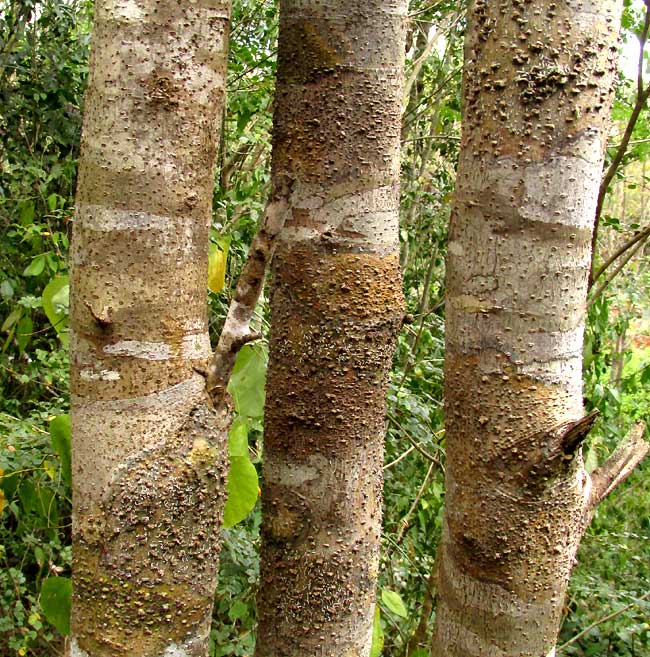
Lenticels are little wart-like growths on woody stems that behave like slits in the bark where gases can be interchanged between the twig's internal tissue and the atmosphere. They're tiny windows helping trees to breathe. The "warts" seen above are lenticels on multiple trunks of a Limestone Senna tree, Senna racemosa right outside my hut door.
First, the trunks are splotchy with what I assume to be lichen populations. Notice that some splotches are wartier than others. The warts are lenticels. A close-up of a splotch with what appears to be old, well-formed lenticels and smaller, newly forming ones is shown below:
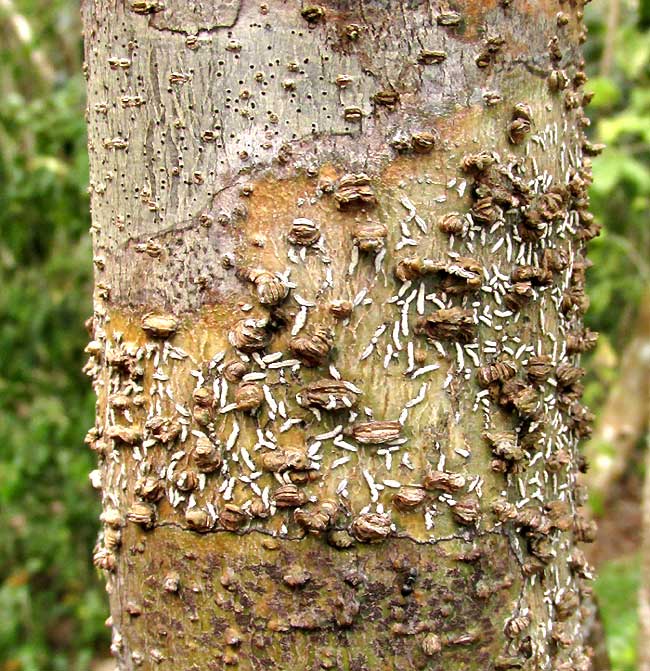
And even closer look at the lenticels, showing the slits through which air exchange takes place, is seen below:
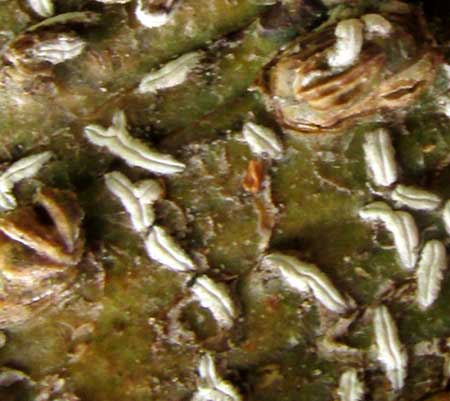
In that picture, notice that between the lenticels there's a smooth, somewhat shiny or waxy-looking greenish surface, which I assume to be the lichen, or maybe simply the fungus.
About 10m from our Limestone Senna there's a young Sapranthus campechianus tree in the Annona Family, on which I found what's shown below:
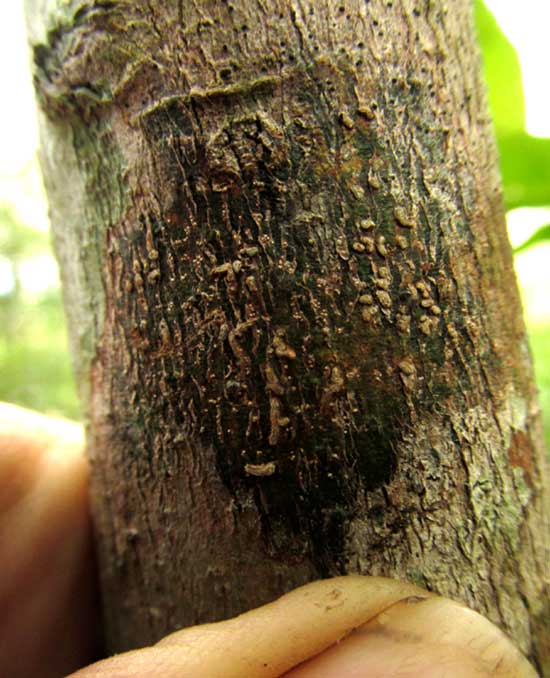
Lenticels within the dark splotch are more developed than on the surrounding grayish bark. Not only that, but on a Red Persimmon tree, Diospyros anisandra, in yet another family, and standing only about 5m from the Limestone Senna, I found what's shown below:
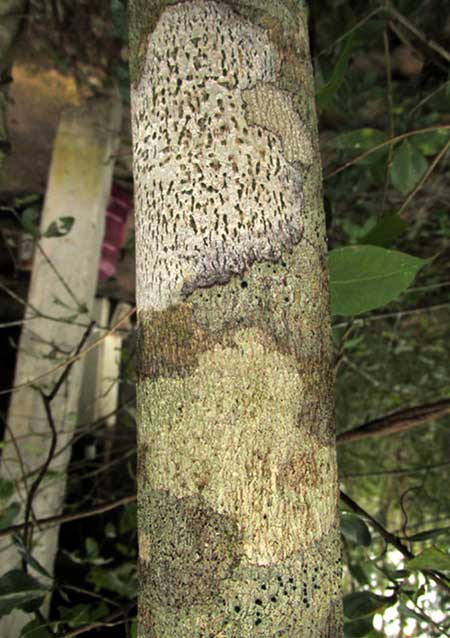
In fact, in our arid, limestone-karst environment, many tree species in various families display splotchy bark, and I find lenticel development often varying from splotch to splotch on many trees. I don't understand why more literature on the matter isn't showing up on the Internet. Am I noticing something not well known to science?
issued December 19, 2019 from the forest just west of Tepakán; elev. ~9m (~30 ft), N21.053°, W89.052°; north-central Yucatán state, MÉXICO
DYPLOLABIA AFZELII
One day this week an email floated in from Richard somewhere in cyberspace, with this laconic and cryptic message:
When I Googled Graphis scripta and lirellae, saw the pictures and read a bit, I started to understand.
Richard was helping with our Newsletter entry of earlier this year on February 15th, {above entry} where I guessed that I was seeing some kind of fungus causing lenticels on tree trunks to become oversized, lenticels being natural slits and holes in stems through which gas exchange takes place. Now I think that what seemed to me oversized lenticels probably were the "apothicia," or spore-producing structures, of crustose lichens in the Script Lichen Family, the Graphidaceae. In this family with apothecia that are long or at least elongated, narrow, often branched, and often with hard, black outer margins, the apothecia are called lirellae (singular: lirella).
Some of the lirellae featured in the earlier entry are similar to those produced by Graphis scripta, mentioned by Richard, but others are not. However, I find a paper online entitled Remarkable diversity of the lichen family Graphidaceae in the Amazon rain forest of Rondônia, Brazil, so lirellae are allowed to come in many diverse forms.
You might compare our pictures with those you Google up using the keywords "Graphidaceae lirellae"